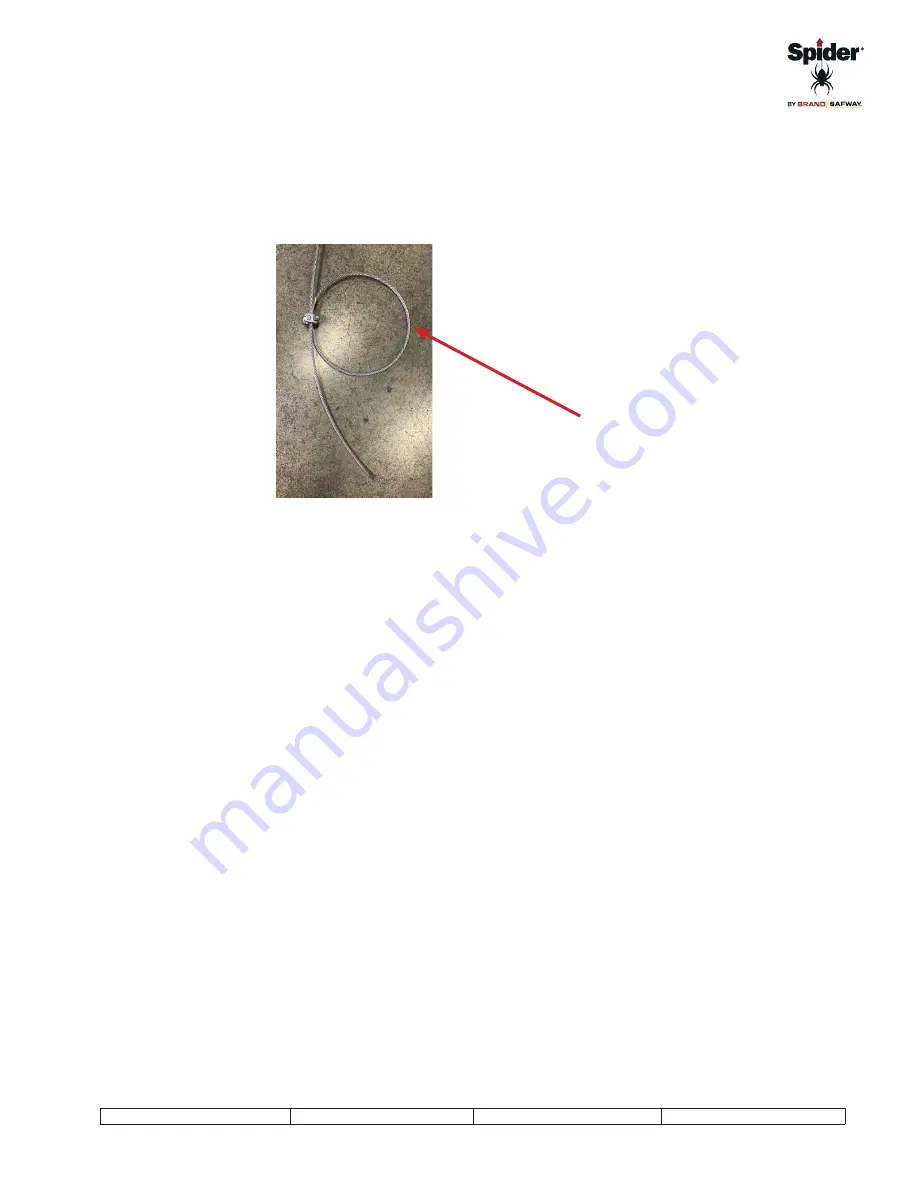
This document and all copies are the property of Spider
®
. All dimensions and data are indicative only.
The user must ensure that the equipment complies with local rules and regulations.
Document No: 721641-1
Revision: B
Issue Date: 2017-Dec-18
Page 13 of 38
3. Use a heavy-duty thimble for the primary suspension wire rope and follow the manufacturer’s
requirements for termination of the wire rope hardware that you are using.
4. In situations where it is not possible to lower the platform to the ground, secure the tail
line with a suspension loop, as shown below, to prevent the platform from sliding off the
suspension ropes. Before rigging in such a situation, consult a safety professional.
Tail line with suspension loop
b) W
ire
r
oPe
c
aUtionS
1. Wire rope stretches when loaded, which reduces the diameter. Wire rope begins to wear the
moment it is used. Regularly inspect wire rope to be sure it is in good condition. Wire rope
must be removed from service when diameter loss of wire breakage occurs, as detailed in
ANSI A10.4.
2.
Do NOT expose the wire rope to fire, temperatures above 200° f (94° C), or passage of
electrical current. Such exposure will damage the wire rope and make it unsafe.
3. Acids will corrode and reduce the strength of both inner and outer stands. If wire rope has
been exposed to corrosive chemicals, it MUST be discarded upon completion of the project,
or sooner if any damage is evident. Do NOT save wire rope that has been in contact with
corrosive substances. When in doubt, replace the wire rope.
c) W
ire
r
oPe
i
nSPection
The need for replacement of suspension wire ropes shall be determined by regular inspection and
shall be based on the condition of the wire rope inspected. Wire rope in active service should be
visually inspected once every working day. A thorough inspection shall be made once a month,
or before each use if the suspension wire ropes have been inactive for 30 days or longer and are
subsequently placed into service. Dated and signed monthly reports indicating the condition of
the ropes found during inspections must be kept.
Any of the following conditions, or combination of conditions, shall be considered sufficient reason
for the removal of the suspension wire rope from service:














































